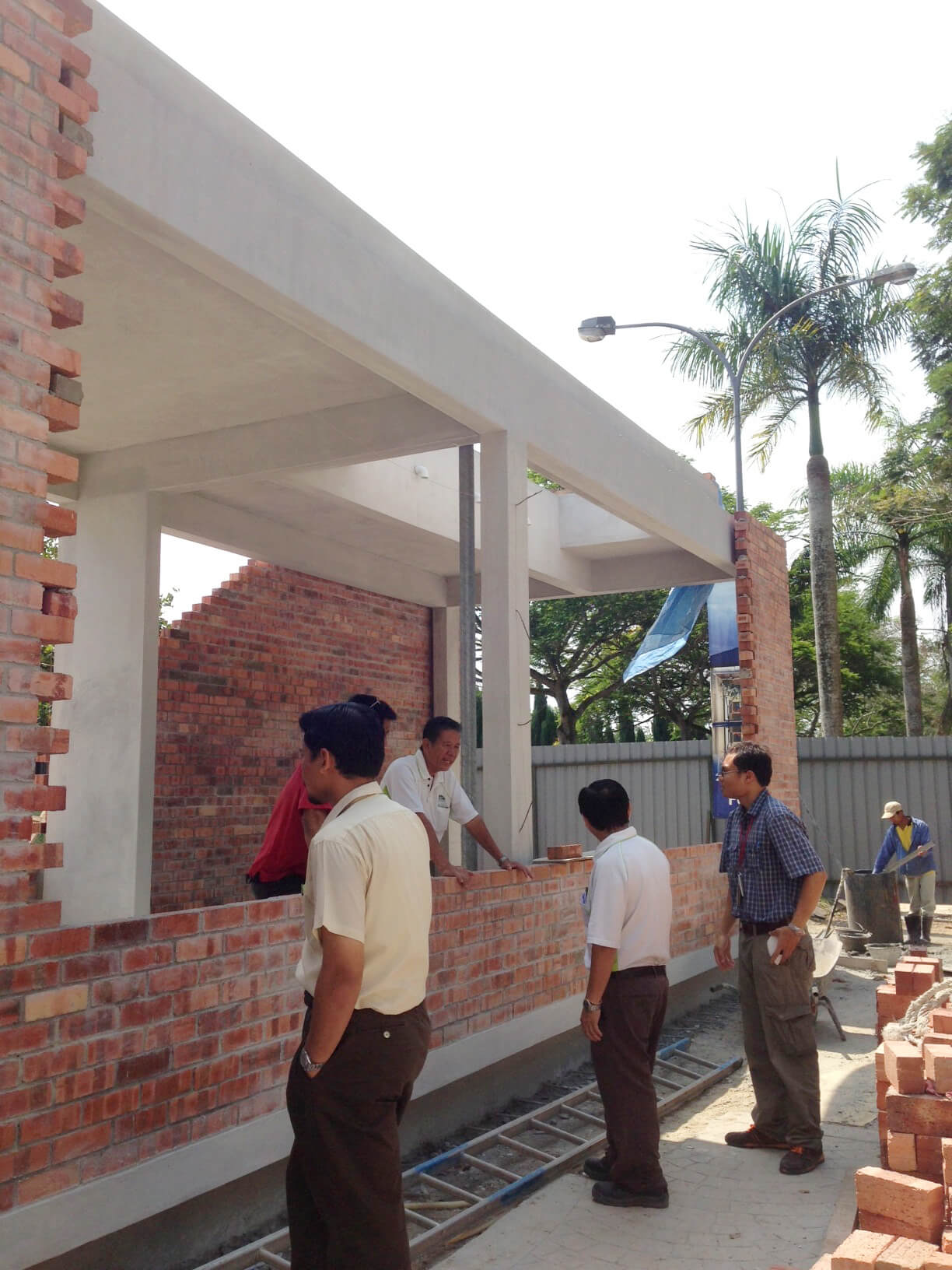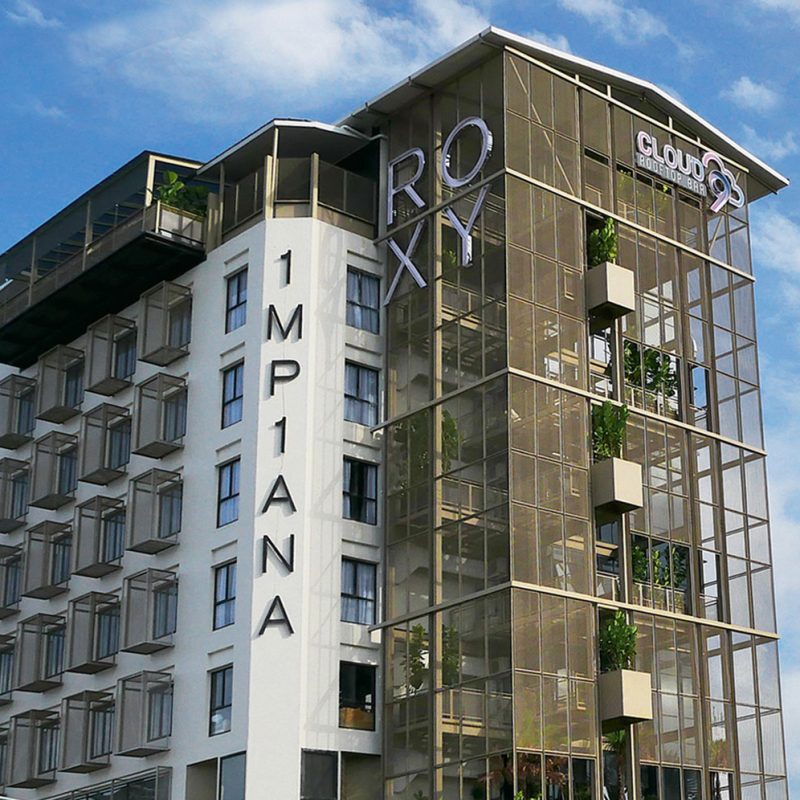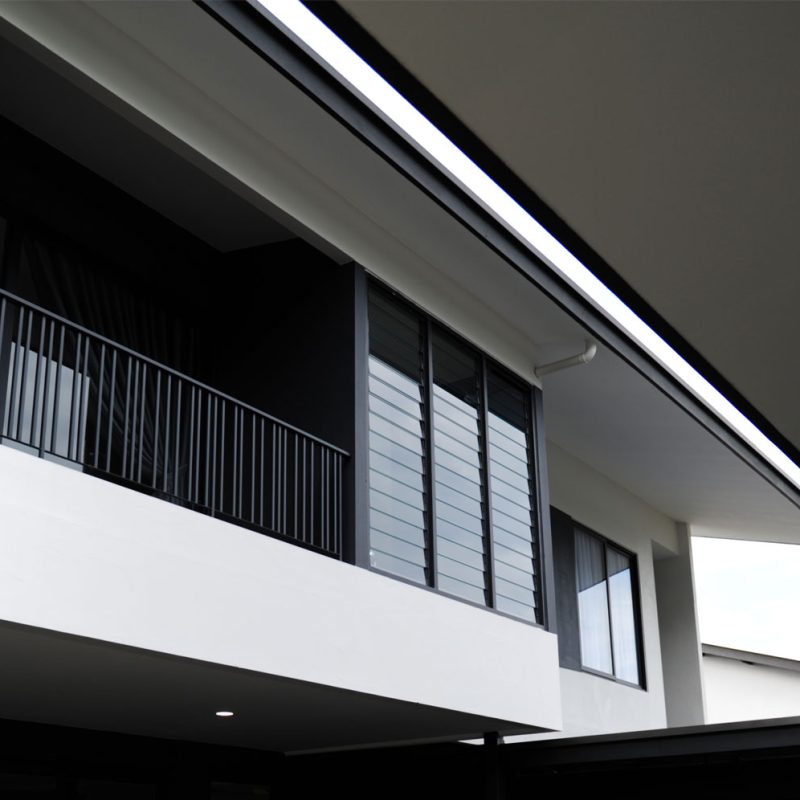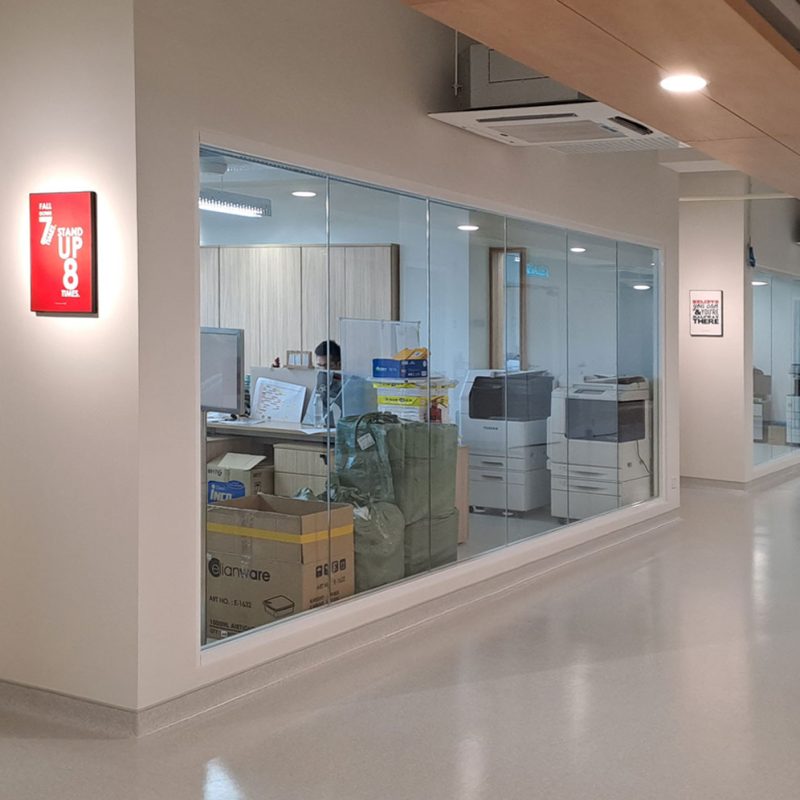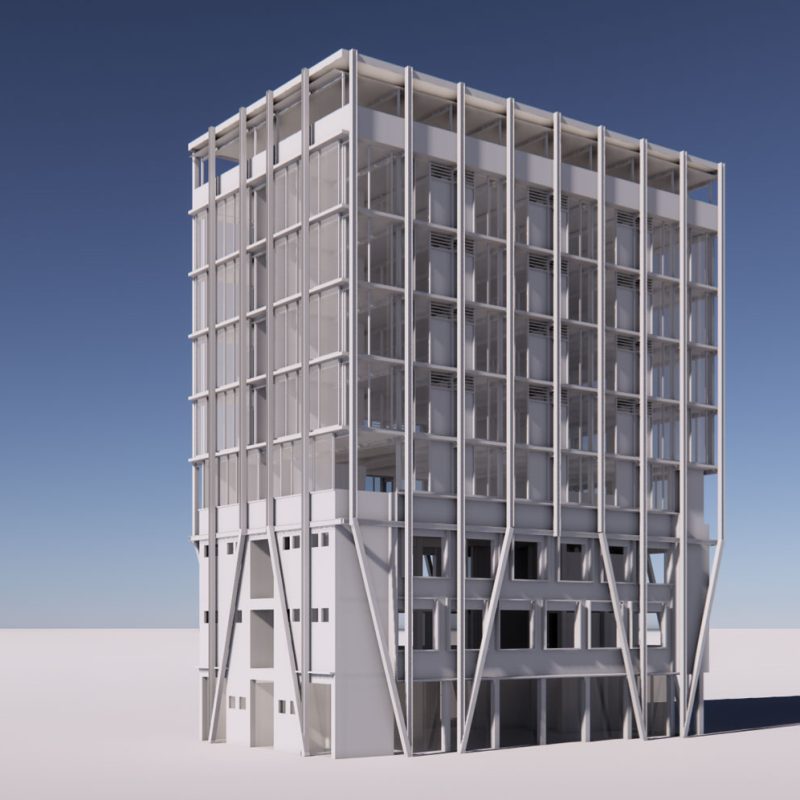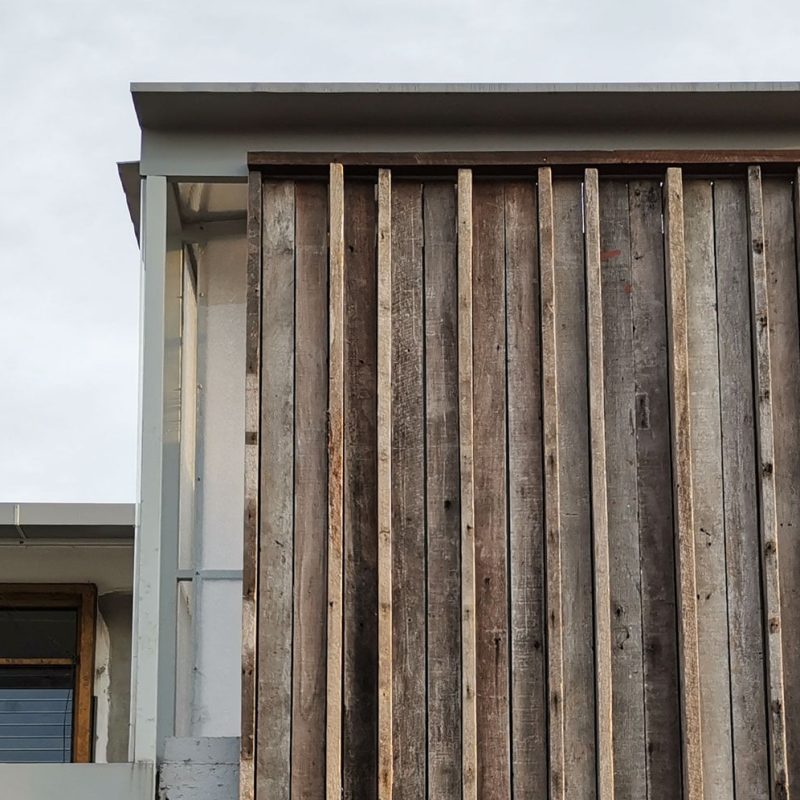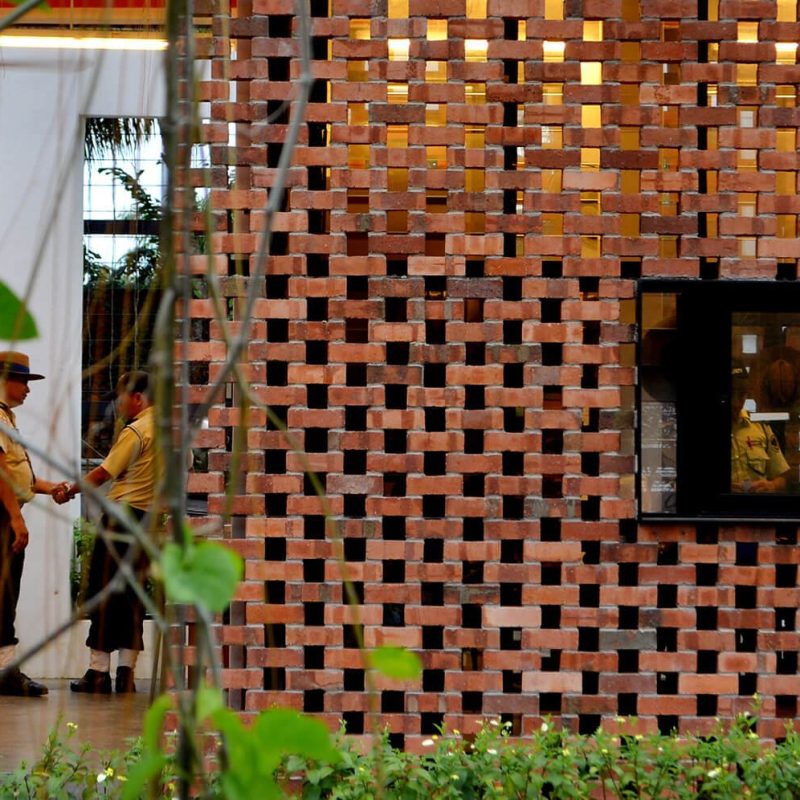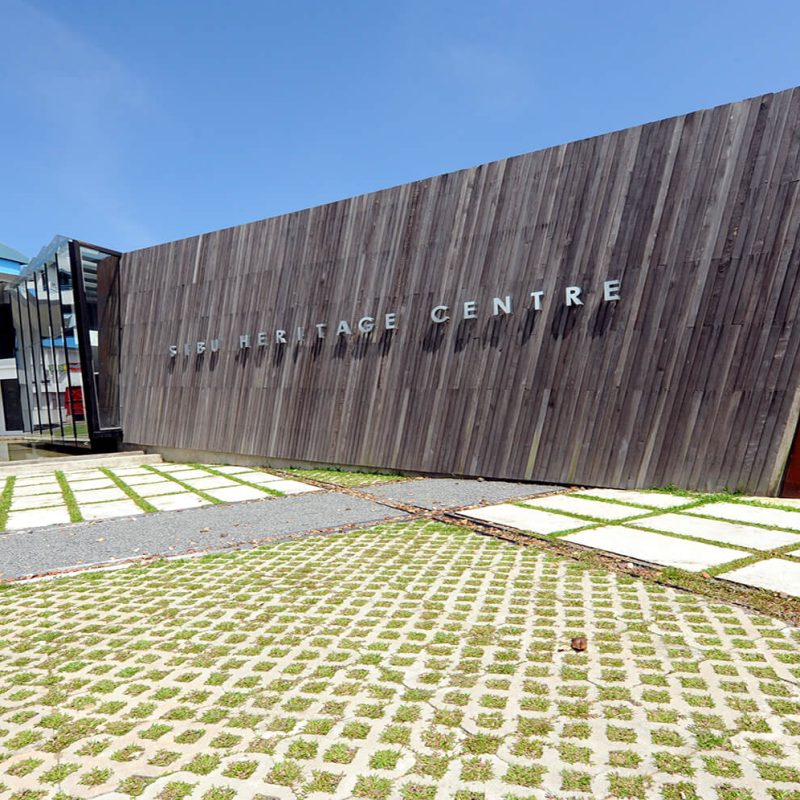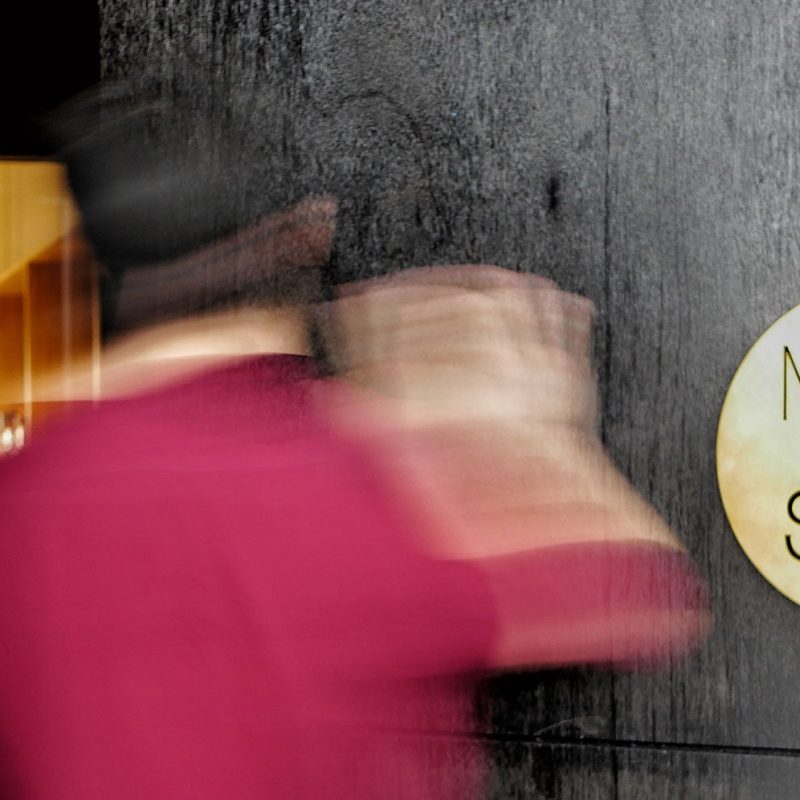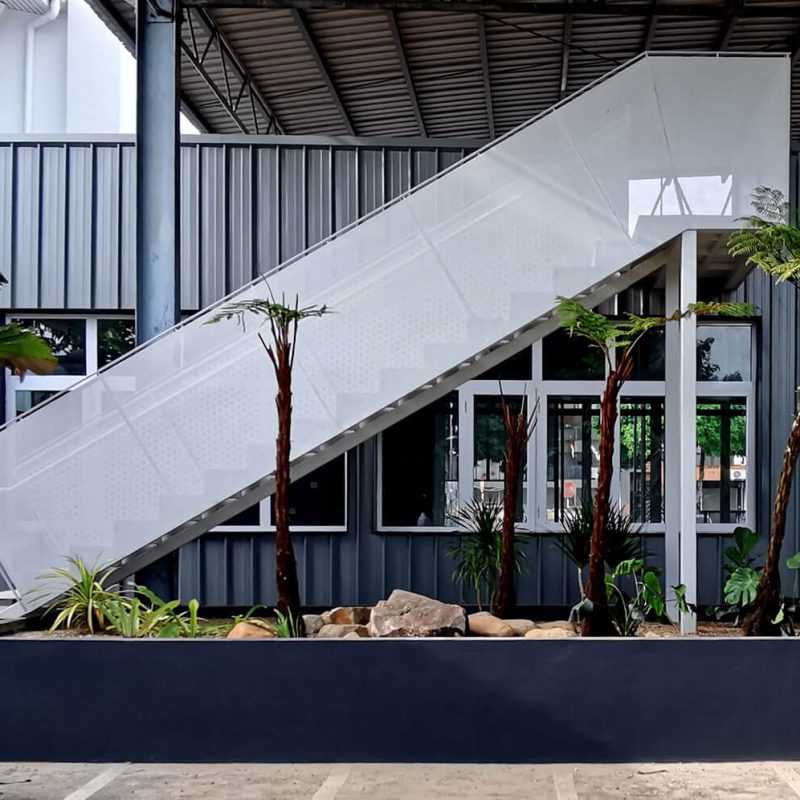Location
- Malaysia
City
- Johor Bahru | Johor
Duration
- 2013 – 2014
Client
- Leisure Farm Resorts
Surface
- Site area
- : –
- Building area
- : –
- Building height
- : 5.6 m | 1 storey
Status
- Completed
Project Type
- Alteration and Addition
Themes
- Adaptive Reuse | Guard House
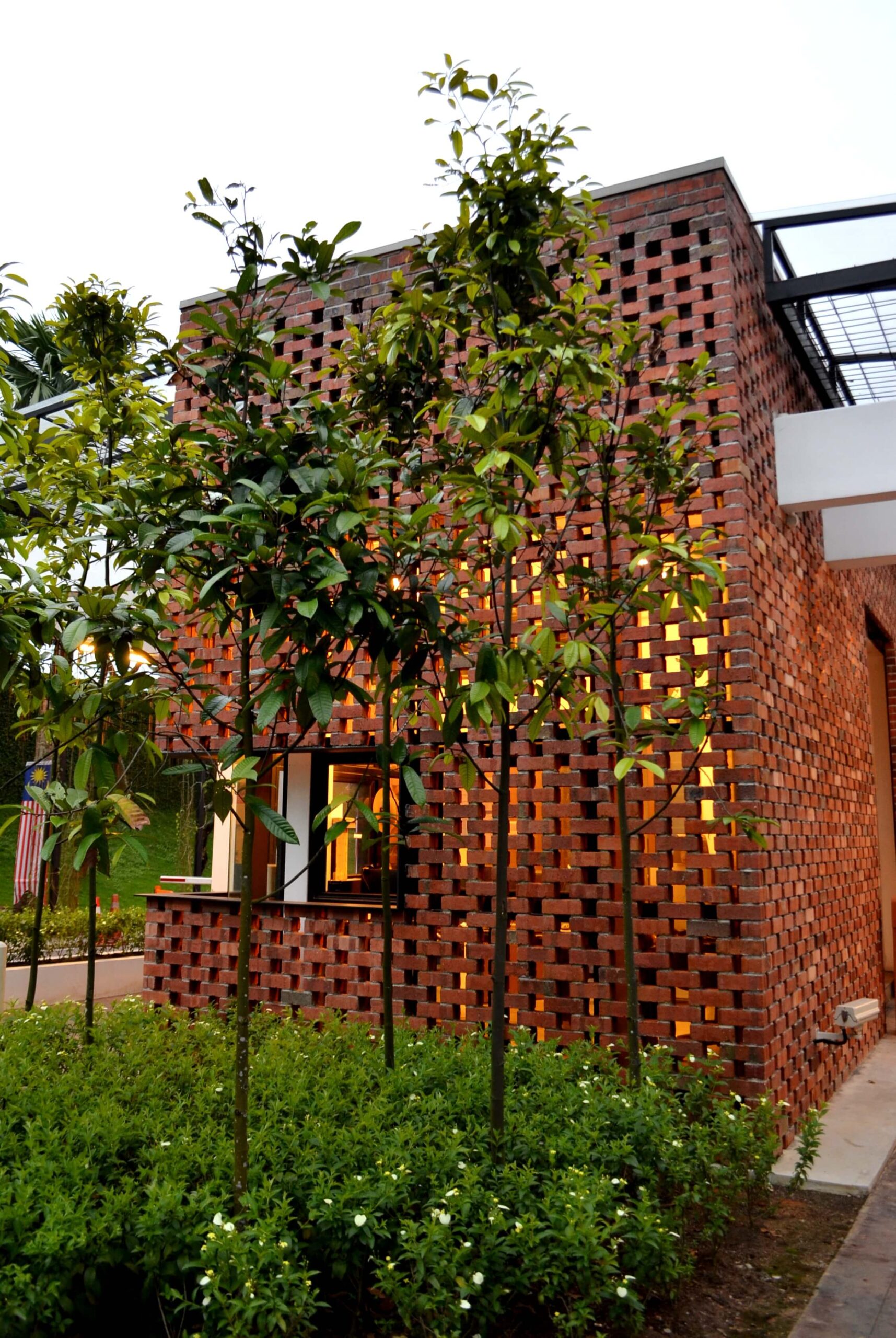
The brief called for the demolition of an existing guard house and the construction of a new one in its place for an exclusive residential and recreational resort in Johor. The present one was a concrete and brick structure with a pitched roof built in the early 1980s. The brief also stipulated the usual series of requirements for a guard house: transparency, ease of maintenance, self-contained and self-sufficient, with a very tight construction budget and time-frame. On top of these requirements was the need for this structure to reflect the clients’ identity as an innovative and environmentally sensitive developer.
The site is a tiny strip of land between two dual carriageways entering and exiting the resort, occupied by the existing guard house.
Our response was to recoup the original investment on-site, considering the adaptive reuse of the existing concrete structure (including the sub-structure) to save valuable time and money. The existing building was measured, and it was determined that the main frame could be retained for the new design. The existing roof was removed to accommodate a new roof that extends over the roads on either side of the building. Apart from this, most of the building is to remain intact, with new elements added to it. Steel is one of the major components, along with clay brick as the other material.
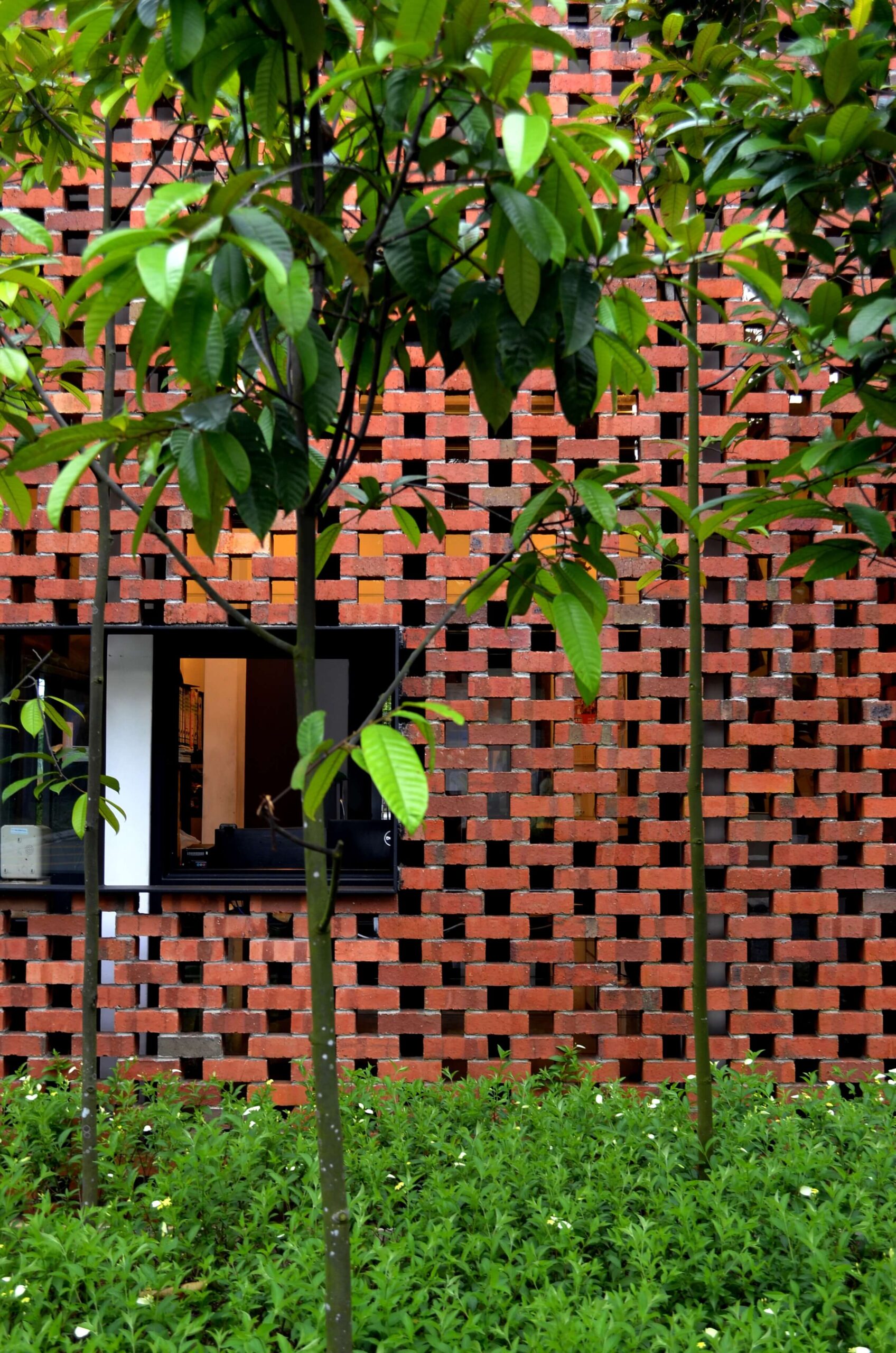
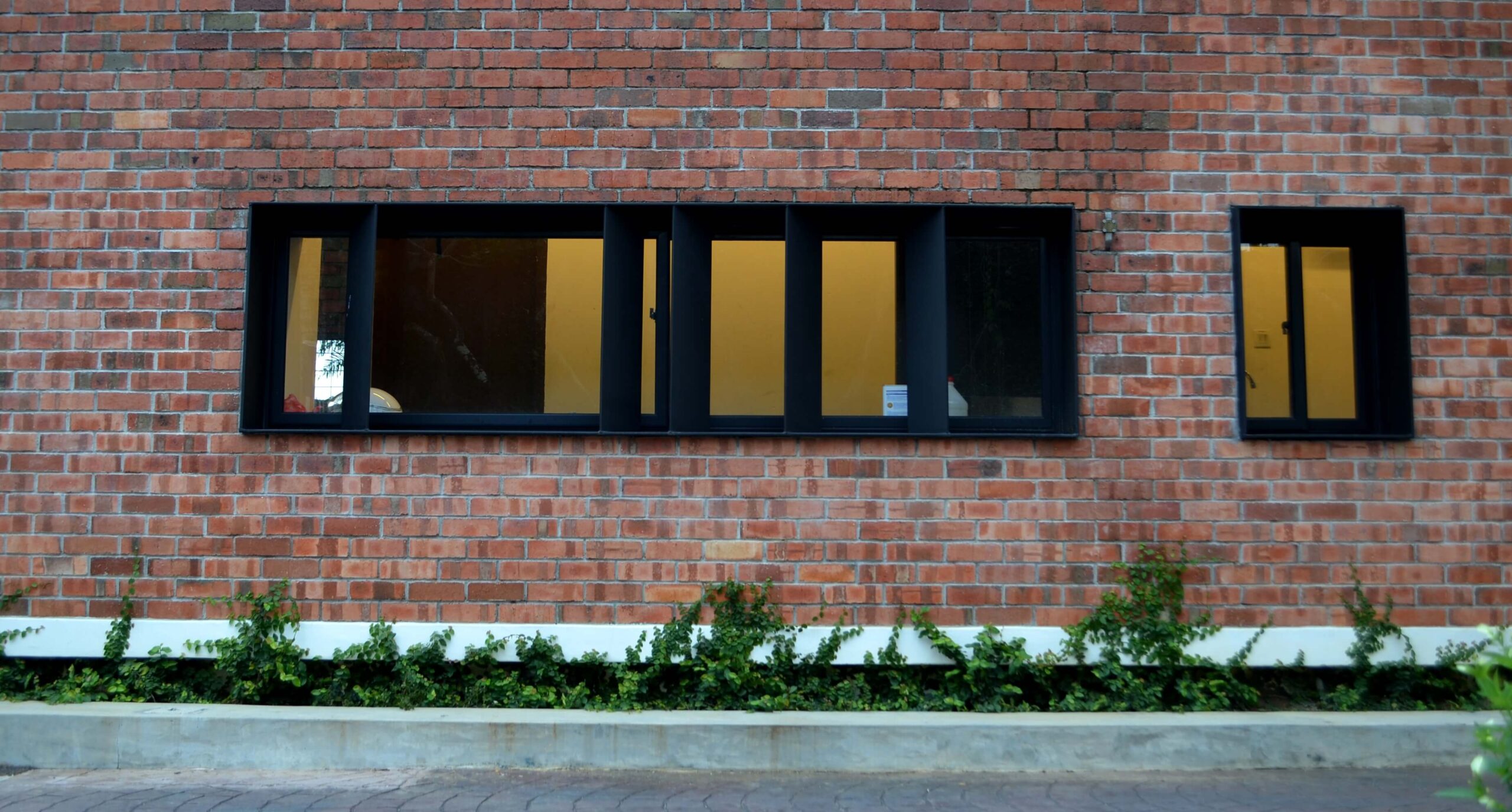
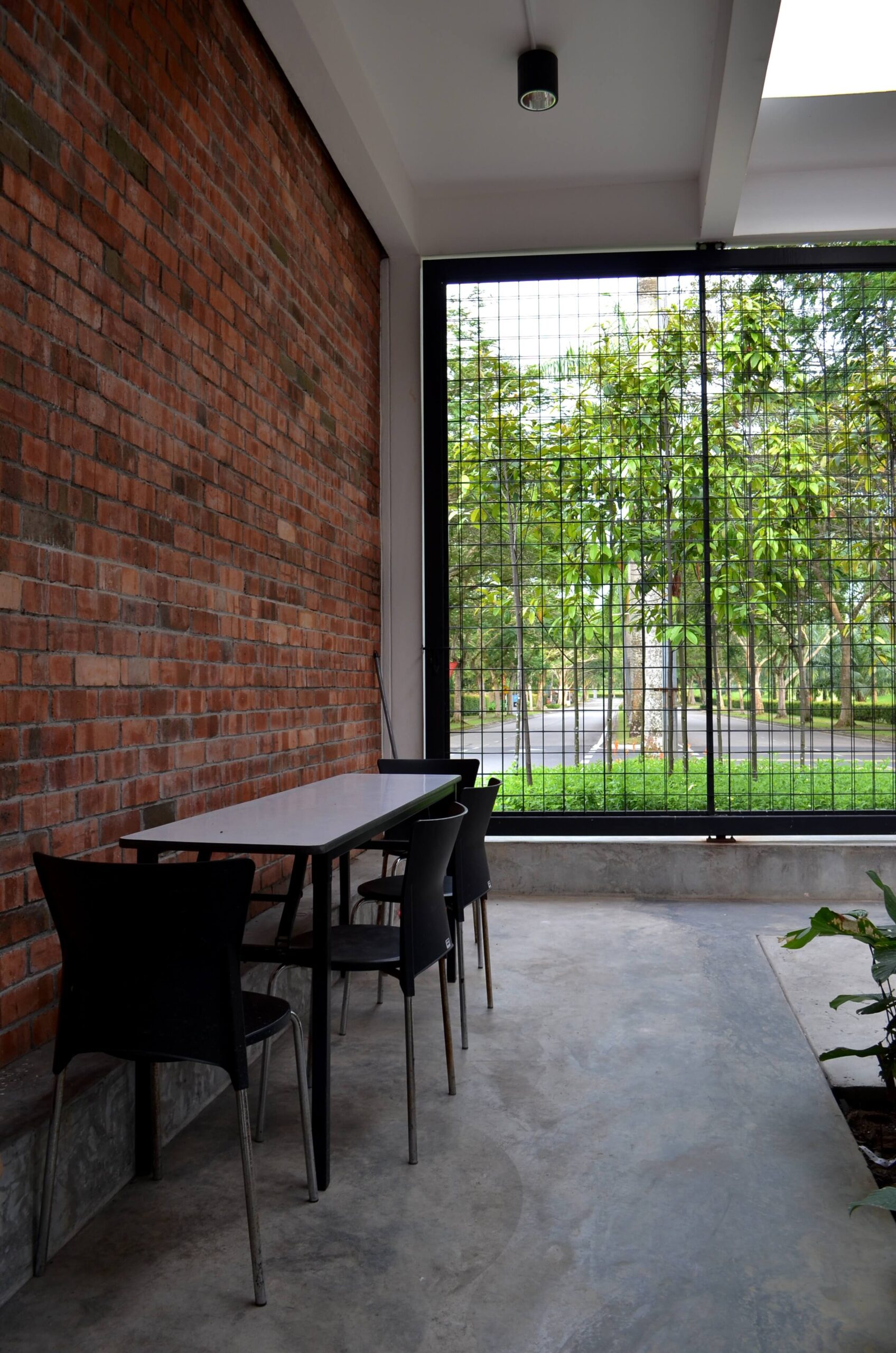
The new roof is constructed using standard steel sections to facilitate ease and speed of construction, with an emphasis on standardized member sizes. A steel reinforcement mesh is utilized as the roofing material, filling the spaces between the steel roof sections. This mesh serves as support for climbing vines, which will eventually create a green roof effect. To balance and ground the roof’s lightness and horizontality, a brick lace wall is incorporated. This wall acts as cladding, transforming the existing concrete structure into its new form.
Although it would have been simpler (and more typical) to use a standard metal roof to cover the steel roof frame, the introduction of a green roof is ‘cooler’ in terms of temperature control and aesthetics. In addition to providing shade, the climbing vine offers tangible benefits such as the scent of the flowers and the possibility of fruit production (considering Markisa or Passion fruit).
The term ‘brick lace’ is used because the standard bearer bond is stretched to create gaps between the bricks, allowing the wall to breathe and providing views through it. The rooms behind the brick lace wall are enclosed with adjustable glass louvre walls, facilitating cross ventilation. This natural airflow is further assisted by a ceiling fan, eliminating the need for air-conditioning. Rainwater collected from the roof is reused for toilets and a small garden located at the rear of the building.
The existing plan of the building is extended towards the rear to accommodate the additional requirements of the new guard house. The new construction occupies a small percentage of the overall building footprint, making it a sustainable project that leverages the previous investment of money, time, and effort into the new building. By extending the personal history of this site, the new structure establishes a meaningful dialogue with the old. From the architect to the client, everyone involved has an interesting story to share, and we are partially recounting it here in this article.
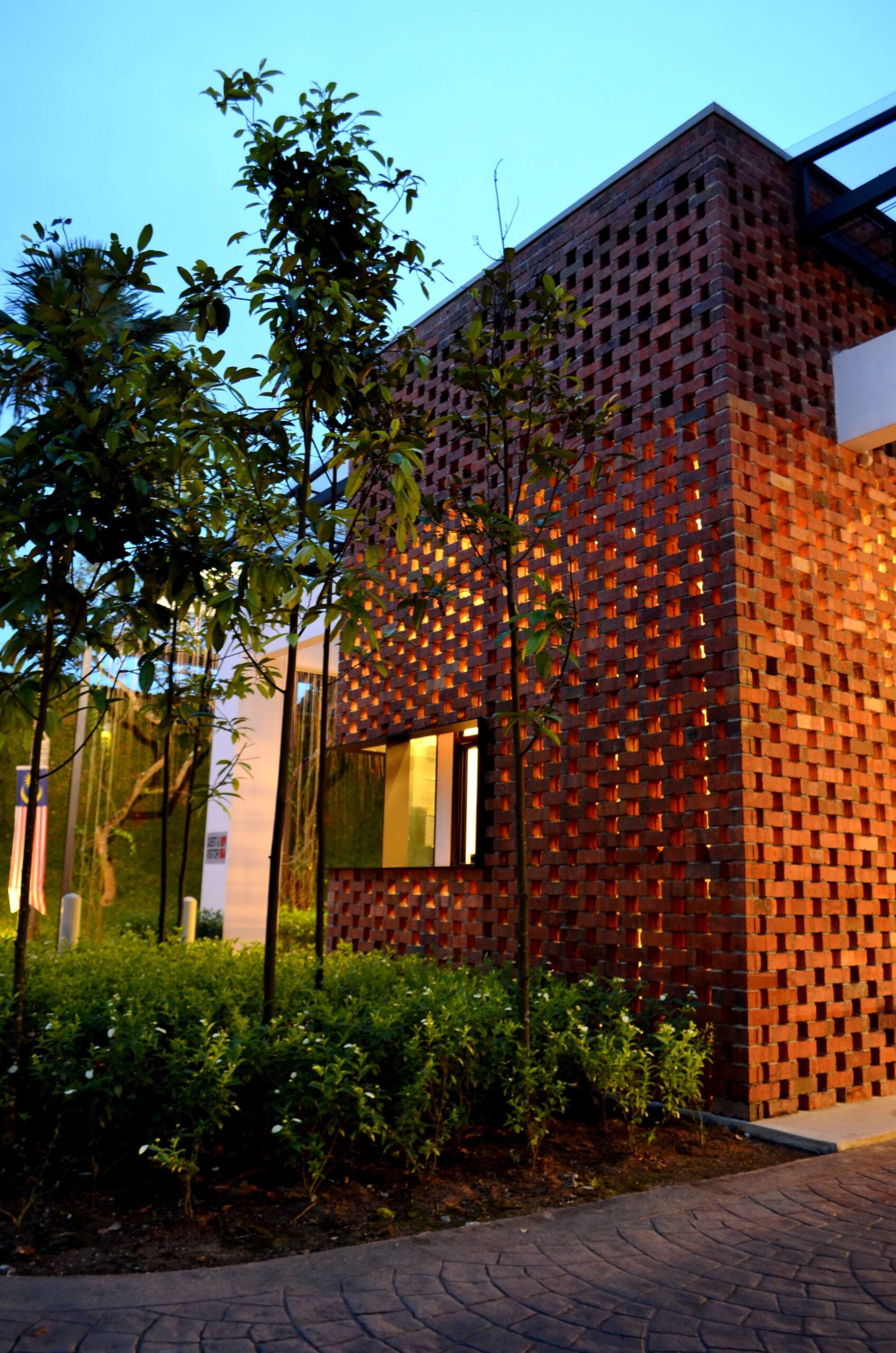

Team Credits
Architect
- Design Network Architects Sdn Bhd
Design Team
- Wee Hii Min
- Freddie Lo
Publications
Awards
- Commendation | PAM Awards 2015 | Alteration and Addition
Share our project
